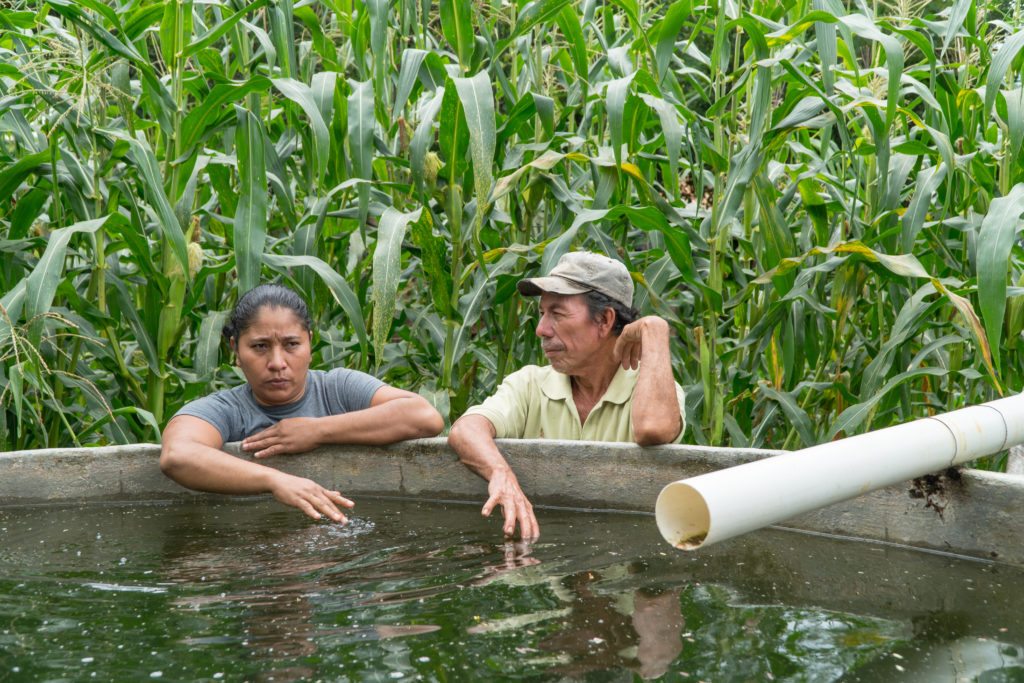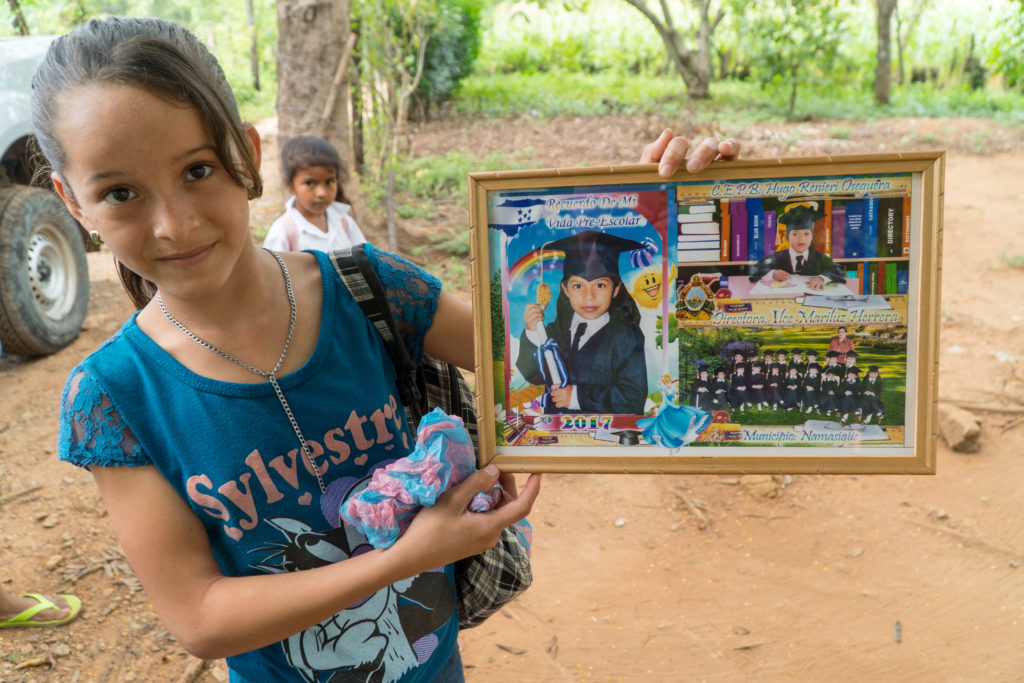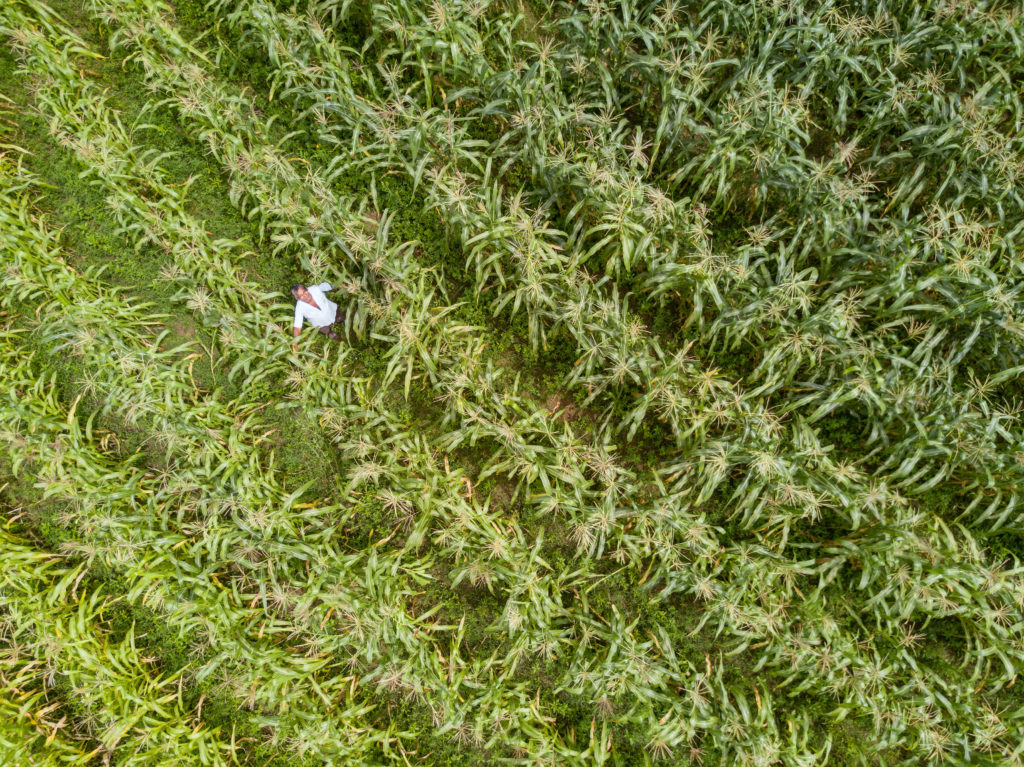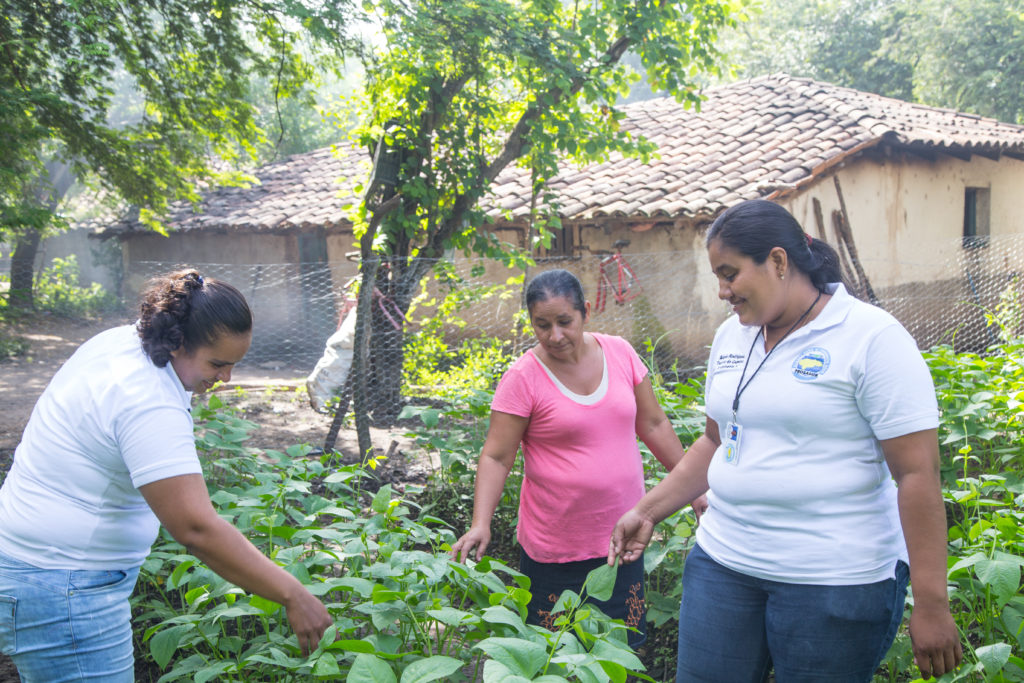To help smallholder farmers in the Dry Corridor expand, development projects must understand the challenges of their context
Where there are challenges, there is also hope
We asked experts from Creative Associates International and partners to discuss the challenges and opportunities for subsistence-level farmers in the Dry Corridor of Central America to effectively engage with markets.
All the experts noted that Dry Corridor farmers’ resilience and capacity for adaptation are truly remarkable. With two planting seasons in case one fails, smallholders in the Dry Corridor are intercropping to diversify risk and investing in more lucrative crops. The farmers have also introduced a series of climate-smart techniques to preserve water and improve soil fertility. Some farmers have developed practices to prevent further soil erosion and land degradation in steep hillside plots.
By facing challenges, we find opportunities. For example, household incomes of farmers in the Dry Corridor of Honduras increase when they selected more profitable and high-value crops. But they haven’t replaced key staple crops such as maize and beans, which are critical to food security with higher value crops. Instead, they are doing both.
The introduction of okra as an in-demand crop to complement existing maize and bean farming systems in Southern Honduras has given many farmers in the region hope. Smallholder farmers grouped together through the Flor del Campo producer group in the community of El Naranjal are now working with an export company that provides credit, technical assistance and a secured market. The farmers have learned to comply with the buyer’s specifications. Okra needs to be between 3 and 4.5 inches and packaged in 7-kilogram boxes.
The group now supplies up to 130 cases a week for a sale price of around $10 each. Despite having a very attractive cash crop, farmers continue to grow maize and beans for home consumption which was critical during the pandemic- when markets were completely disrupted, and farmers could not make an income. They had enough food to get through the lean season. Thanks to improved yields resulting from adoption of good agricultural practices and especially water made available through rooftop rainwater harvesting systems, farmers in the dry corridor are becoming more resilient to climate change.
Below is a selection of answers from five experts about what it takes to link poor subsistence-based farmers with markets amidst the worsening effects of climate change in the Central American Dry Corridor.
Access to markets and human capital in the Dry Corridor
The greatest value in agriculture lies in the marketing of products, which is also the weakest link for small producers. Smallholder farmers receive help to improve yields and to plant but once they harvest, they don’t know where or how to sell.
When there is an opportunity for small producers to access a larger market, they often cannot meet the specifications required by buyers. As a result, farmers sell to intermediaries or local merchants and traders who have that knowledge at the farm gate, and who therefore generate most of the profits.
One of the greatest challenges in the Dry Corridor is increasing smallholder farmers’ resilience given their low yields. Under rain-fed agriculture, production is variable in quality and quantity because of a lack of humidity in critical periods. There are successful experiences in Central America worth sharing, particularly in regard to strategies for water conservation, rainwater harvesting and irrigation technologies.
Another major challenge has been the dependence on commodities that are subject to international prices and the over-reliance of smallholder farmers on a single crop. To meet these challenges, farmers have learned to add value and diversify their crops. Following the coffee rust crisis, Dry Corridor farmers are increasingly adopting agroforestry systems.
Indigenous farming practices like the Maya milpa farming techniques, have many advantages and are an example of regenerative agricultureThese climate smart farming practices rely on agro-biodiversity and the use of live fences formed with fruit trees to reduce soil erosion. Farmer led regenerative practices are being adopted by farmers and being shared through farmer led communities of practice.

Taking farmers from survival to success
The inhabitants of these hillside slopes in the Dry Corridor are food producers and are the basis of food security in these communities. With moderate but continuous investment, the soil on slopes and in marginal areas can be improved. The investment starts with cover crops, soil improvement and agricultural intensification. For a long time, Honduras has used these technologies and encouraged the farmer-to-farmer horizontal methodology, which represents the best way to promote technology for soil and water conservation in the Dry Corridor. In Honduras, the Quesungual agroforestry system has improved smallholder resilience, improved soil fertility and improved yields for more than 10 years. Evidence is being collected on its advantages as a model for regenerative agriculture.
There is a short list of critical things that a farmer requires to generate more household income: better financial management techniques; use of basic business models; insights into leveraging remittances; access to credit; and introducing technology and information about markets and prices. As my colleagues also emphasize, successful farmers diversify into products with higher profit margins, which they can take control of the value added and reduce the number of intermediaries in the distribution process.

Seeing opportunities in Honduras
Jorge Lainez, Chief of Party, Honduras Dry Corridor Alliance, Creative Associates International
I have been living and working in the Honduran Dry Corridor for a long time, most recently implementing a World Bank-funded program based out of Choluteca. The dedication and determination of smallholder farmers never ceases to impress me, though I feel that they frequently fight an uphill battle to feed their families.
Most recently, I have been working on a program called ACS-PROSASUR, which was funded by the World Bank and implemented by INVEST-H as part of the broader Dry Corridor Alliance project. The initiative addressed water scarcity, hygiene, child under-nutrition and rural livelihoods, and it aimed to lift 50,000 families out of extreme poverty by improving agricultural practices, offering health education and business support, among other interventions. Creative implemented programs in 12 municipalities in the departments of Choluteca y El Paraíso, working with 6,000 families.
To learn more about the successes of the program, please see this interactive map.
The challenges facing farmers in the Honduran Dry Corridor are many and well known. The main ones include: access to assets like land and water; access to agricultural inputs, improved agricultural practices and technologies; access to financial resources; access to markets in an inclusive and win-win commercial relationship, where the private company invests part of its funds in training and technical assistance to the least favored links in the value chain, such as the production link made by small producers; and training in the basics of marketing and business development services.
Fortunately, farmers in the Dry Corridor are in a good position to grow their businesses, improve household income and improve living conditions in their communities. The area is conducive to crops of high economic value that are ideal for export, such as okra, melon, watermelon, sugar cane, cashew, mango, plum, tilapia and shrimp. The area has consolidated private companies with which public-private alliances can be established and funds leveraged to favor small producers. The area has technical production infrastructure, including the Port of Henecan, which provides access to international markets, and roads that are in relatively good condition, such as the dry canal, which links the southern area with the Atlantic coast of Honduras. Finally, the Dry Corridor borders with Nicaragua and El Salvador, both potential markets for almost all items produced by small holder farmers.
Finally, the environment in the Dry Corridor is very fragile and it is critical that we keep this in mind. For ACS-PROSASUR, building climate resilience has become a central aspect of all programming. For example, if we worked with irrigation systems, water harvesting and micro irrigation systems, we had to consider the sustainability of those investments. For example, we can have irrigation systems, but we must make sure that the water that we use for the micro-irrigation systems is protected and managed. So, I’m talking about managing natural resources, and mainly water.
William Wallis is a Senior Project Manager in Creative’s Economic Growth Division.



